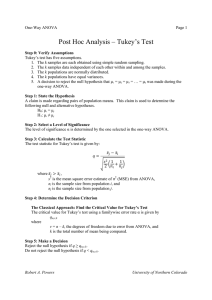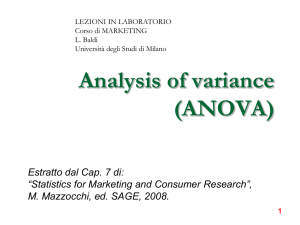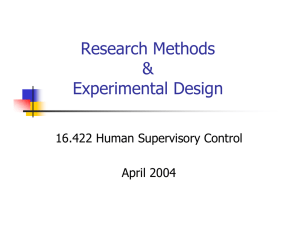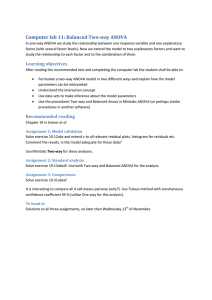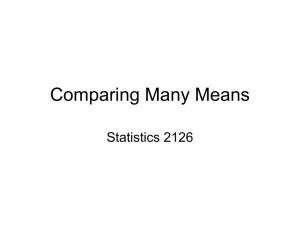Review
advertisement
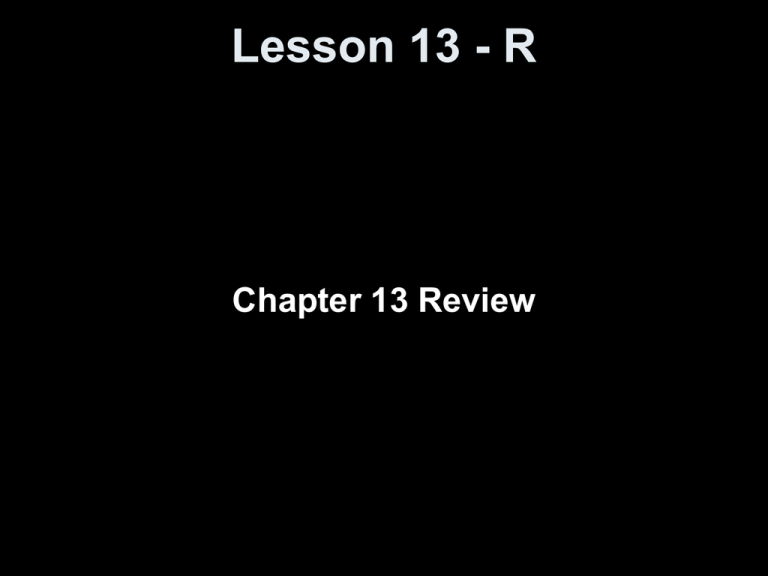
Lesson 13 - R Chapter 13 Review Example 1 When we are analyzing three or more means, we should use the technique of 1) 2) 3) 4) The analysis of variance Tests of dependent means Tests of categories The normal distribution Example 2 Which probability distribution do we use when we want to test three or more means? 1) 2) 3) 4) The normal distribution The chi-square distribution The t-distribution The F distribution Example 3 If an ANOVA has rejected the null hypothesis, then we could 1) Determine which of the means are significantly different 2) Conclude that the groups have the same population means 3) Collect more data until we do not reject the null hypothesis 4) All of the above Example 4 The test used to determine which means are different, after performing an ANOVA, is the 1) 2) 3) 4) Tukey More or Less Significant Test Pearson chi-square test Tukey Honestly Significant Difference Test Pearson significant category test Example 5 A randomized block design 1) Is a sampling method to ensure random samples 2) Is an experimental design that balances observations over the factors 3) Is a significance test of whether observed data has a normal distribution 4) Is a method to compute confidence intervals for the difference of three means Example 6 In a randomized block design, if the null hypothesis of equal population means is rejected, then 1) We cannot determine which means differ significantly 2) We must reblock the design to collect factors 3) We could determine which means differ significantly by using the Tukey test 4) We should switch the blocks and treatments and analyze the data again Example 7 To analyze mean responses correlated with the two factors “Gender” and “Age”, it would be appropriate to use 1) 2) 3) 4) A chi-square test A two-way analysis of variance A normal z-score A histogram Example 8 Rejecting the null hypothesis that there is no effect of factor A on the response variable means that 1) Factor B must have an effect on the response variable 2) Factors A and B must have an interaction 3) The values of the response variable are independent of the levels of factor A 4) None of the above Summary and Homework • Summary: – We use the Analysis of Variance (ANOVA) method to compare three or more means – ANOVA analyzes the differences in the sample means using sums of squares and an F test – One-way ANOVA analyzes models where there is only one factor that differentiates the groups – Two-way ANOVA analyzes models where there are two factors that differentiate the groups • Homework – pg 729 – 733; 3, 7, 10

